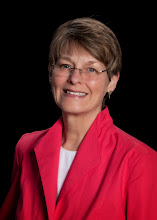On the one track, we have the Spirit: the deepest values that drive us to become our best selves. The Spirit is powerful, and it is elusive. It can be described, but not defined. Its fruits can be observed, but the creator of those fruits is invisible to the naked eye. A journey on the Spirit track is inspired by faith.
On the other track, we have Science: humanity’s current theory about how things work. Science observes. It is skeptical of anything inaccessible to the senses. Science tests hypotheses and discards those that do not hold up when challenged by facts. Science is pragmatic: if a theory doesn’t work, it doesn’t survive. A journey on the Science track is grounded in evidence.
Personal growth calls for change. We want some aspect of ourselves to be different—and better—a year from now. The Spirit path points us in the direction of change and fires us with a passion for action. Science tells us in practical terms how to get the results that we crave.
The science of behavioral change has various academic homes: organizational development, social services, health care. A common theme across disciplines is how best to align actions with intentions. An organization intends employee effort to align with its mission. Doctors intend that patients align their habits with the requirements of health and longevity. Social workers intend the skills of clients to align with the demands of productive and independent lives.
A successful wellness journey aligns our actions and habits with the well-being we intend. Spirit infuses our intention with direction and power; science helps us get there. Some approaches to behavioral change are more effective than others. In coming weeks, I will share some scientific findings that I find most helpful to a traveler on the road to greater health and happiness.
In the meantime, ask yourself, “What works for me?” Think of a personal challenge you turned around by changing your patterns of thinking and acting. What made it work then, when other efforts to change have failed? It is likely that your success stories are similar to those of others, and that we can all learn from the stories each of us has to tell.
Until the next time, be well.
Pam
